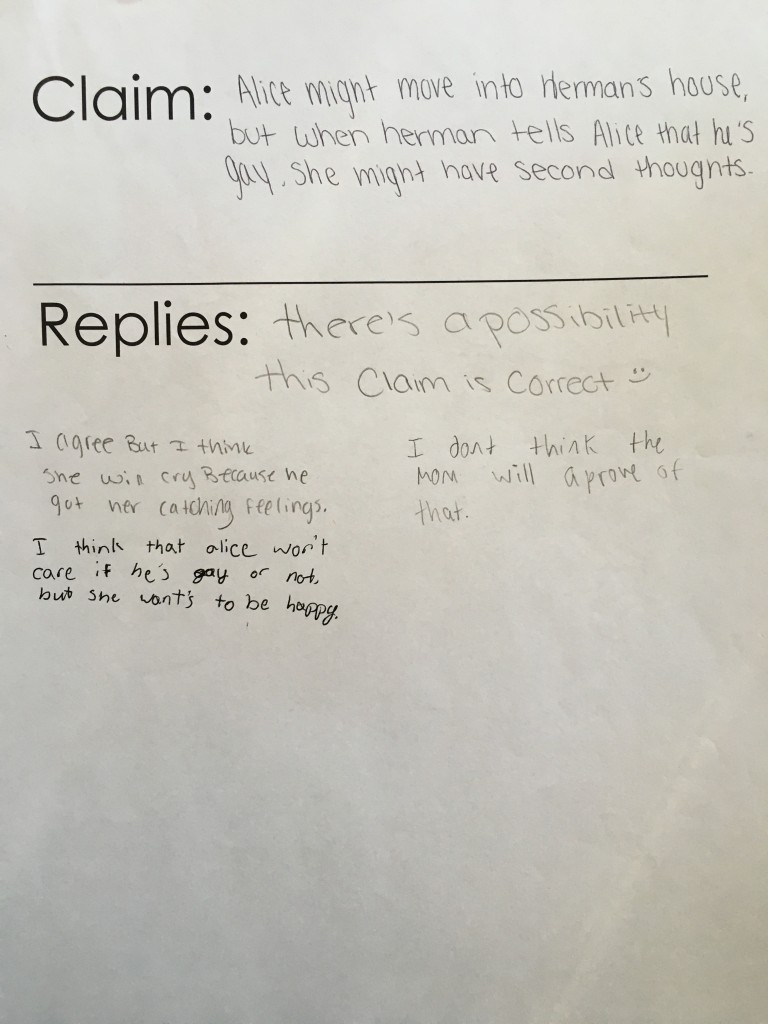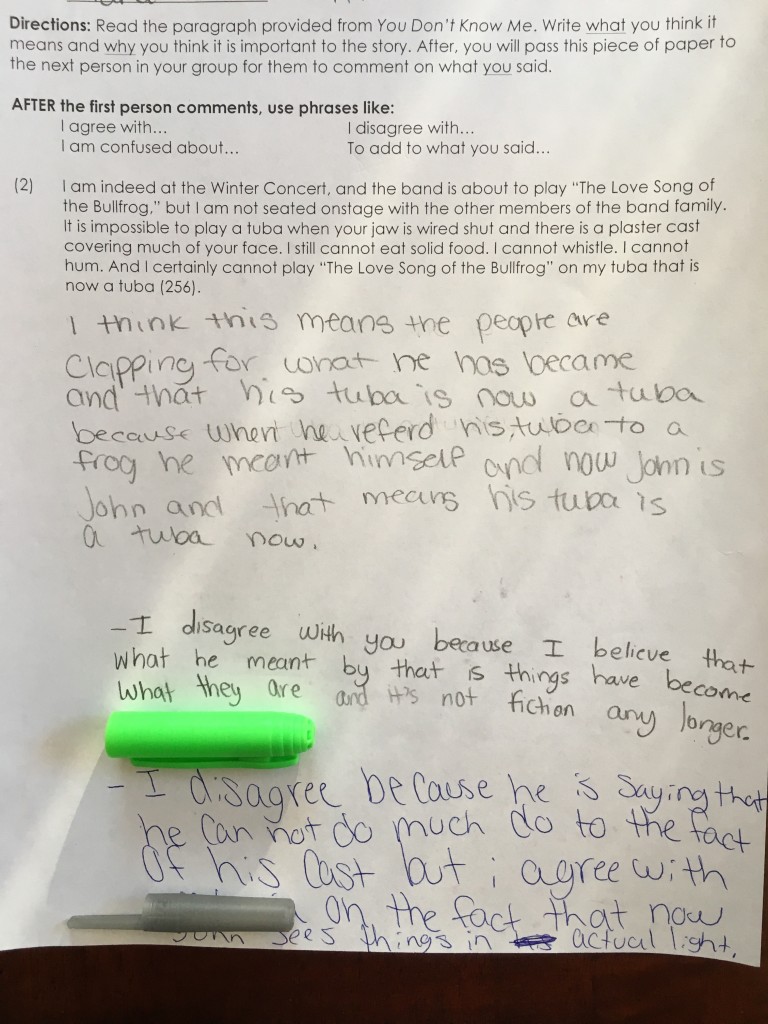I end my year of student teaching with two full-time classes: one section of 9th grade English and one section of 11th grade English. Both classes pose their challenges, with the freshmen continually pushing me to hold them accountable and the junior’s penchant for letting “wait time” stretch to infinity.
These classroom learning communities are as different as the individual students are who make up the communities. In the freshmen wing, with my 9C group, I was introduced back in September to twenty students full of energy. The classroom community was raw but determined; almost all had come from a strong eighth-grade English classroom where active participation was the norm. In September, students in 9C begged me to move away from calling on people hand-by-hand to have discussions. They wanted to try out conversation style from last year. I started to try this out in October, with some success. Conversation began to feel less abrupt and jagged. Student-leaders like Maria, Stella, and Elizabeth carried conversation.
Still, though, 9C struggled to stay focused and even with all of their energy I was figuratively tearing my hair out trying to get them to settle down. The honeymoon period of self-regulated classroom discussion fell apart quickly, until it reached a tipping point in November and early December. We tried out a Socratic seminar only to have it completely unravel. Students were yelling over each other for almost four weeks from before Thanksgiving until two weeks into December. I owed it to 9C to figure out what needed to happen to propel conversation forward.
I made adjustments and we righted the ship. For the time after the middle of December, I worked to get students thinking about the texts while conversing respectfully. In talking with other teachers on my teams in the 9th and 11th grade, I rethought class plans. I implemented more routines, including the adding of a daily agenda to the board and getting in the habit of writing a journal entry each day. Once we began reading You Don’t Know Me in early January, students were intuiting the system. This six-week unit got the classroom community somewhere it had never been before: listening and responding to each other. Whereas in early September, students were reluctant to read aloud in class or answer questions, by February students were more actively engaging. Homework completion rates rose from 40% in September to over 70% in January. Every student in class had participated in a read-aloud in February, while back in September only a handful of students ever volunteered to read. I have worked to instill in students that our community is one of trust, compassion, and enthusiasm. I am proud of their work this year.
One example of continuing maturation and growth has been the participation in small group activities. In September, students did not work deeply to talk in groups about readings; furthermore, I was still relatively unsure on how to structure these activities. One in particular, the “Silent Conversation” activity that asks students to read a passage, comment on it, and pass it to a neighbor to do the same, was very challenging for students and myself earlier this year.
An “strong” example from the first go-around, on September 11, 2015:
And then a “typical” example from the second attempt, on February 12, 2016:
In the first, I provided a rather vague sheet in which students made claims about a story and then had their conversation. Not the strongest effort on my part, and not the most insightful commentary from my students. The next conversation, many months later, was better scaffolded with directions, models, and a quote. The results? All groups completing the activity and then a thoughtful debriefing session to follow. Students are using the tools from this year of careful analysis and informed conversation.
* * *
The juniors were much the reverse, though without the disrespectful extremes. I inherited a group of twenty-three juniors who wouldn’t say anything when posed with a question. The first few weeks were awkwardly quiet; day after day, I would create activities for students to converse as a whole class. Nobody said anything. During a day when I was being observed, I even chuckled as I asked students why the room was so dead.
In talking with my 11th grade mentors, Mrs. Carlson and Mrs. Roach, we concluded that some challenging work that included small group conversation brought back to whole class discussion might get students interested in talking. I tried out a couple methods with little success, including a “Think-Pair-Share” where students talked with a neighbor about a theme in The Kite Runner before sharing it out with class. Comments flowed like molasses: “It’s good,” “I agree,” “I guess so.”
One morning a couple weeks before February vacation, I finally began to hear them engage. Here is a segment of a journal entry from that week…
“I have been working more consciously to challenge students through deep conversation and insightful commentary. The way we reached this Thursday was with a layered discussion. I broke students up into heterogeneous groups of 3-4 students each. Then, I let each group pick from a hat, at random, two discussion questions. The pile had ten completely different questions, so that each group could have 2 for themselves. Students had some time to formulate responses and talk, writing their main ideas down to give me at the end. When time was up, groups shared out a response to one question each. Then the group to their left became a first responder and had to offer agreement, disagreement, or a new insight to the topic. I felt this built speaking and listening skills as well as required students to re-enter the text. […] Commentary from each group was strong, including groups who hypothesized on why Amir felt like a tourist in Afghanistan and why Baba never told Amir about Hassan. This style of conversation worked so well for the group that I am hoping to try it again soon. I heard from more than twelve of the eighteen students in class that day.”
And I did try this out in subsequent weeks, each time hearing more and more students. I even photocopied passages of the text and had small groups do close readings to jigsaw with the other members of class. Students all shared out their ideas and six students even offered follow-up questions unsolicited.
The juniors are still a quiet group compared to the freshmen, and perhaps this has to do with the juniors’ maturing past the point of the freshmen’s need to be heard at all times. Silence is not a detriment, but an opportunity.




